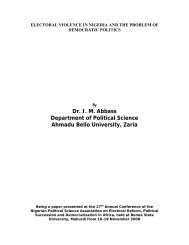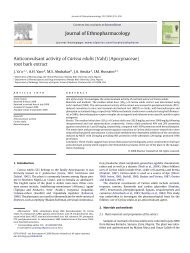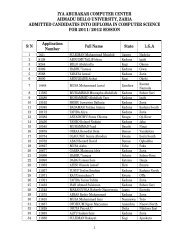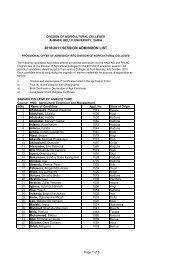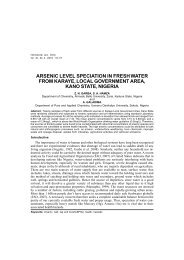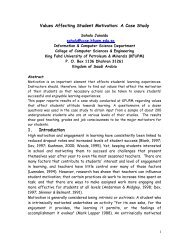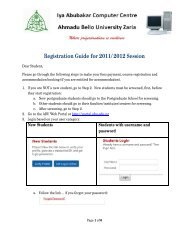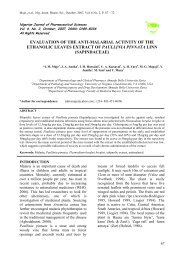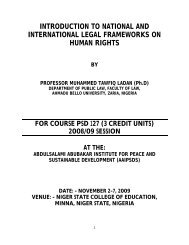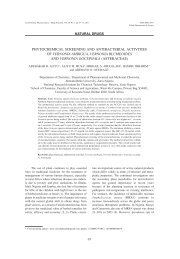Study of the Effect of Aqueous Hibiscus Sabdariffa Linn Seed Extract ...
Study of the Effect of Aqueous Hibiscus Sabdariffa Linn Seed Extract ...
Study of the Effect of Aqueous Hibiscus Sabdariffa Linn Seed Extract ...
Create successful ePaper yourself
Turn your PDF publications into a flip-book with our unique Google optimized e-Paper software.
<strong>Study</strong> <strong>of</strong> <strong>the</strong> <strong>Effect</strong> <strong>of</strong> <strong>Aqueous</strong> <strong>Hibiscus</strong> <strong>Sabdariffa</strong> <strong>Linn</strong> <strong>Seed</strong> <strong>Extract</strong> on Serum<br />
Prolactin Level <strong>of</strong> Lactating Female Albino Rats 582<br />
Thus, it can be concluded from this study that <strong>the</strong> aqueous seed extract <strong>of</strong> <strong>Hibiscus</strong> sabdariffa l.<br />
possess a lactogenic activity with a favourable enhancement ability in increasing serum prolactin level<br />
which is <strong>the</strong> principal lactogenic hormone secreted by anterior pituitary. This lactogenic activity<br />
establishes a rationale for <strong>the</strong> ethnomedicinal use <strong>of</strong> <strong>the</strong>se seeds as galactogogue. Mechanism <strong>of</strong> action<br />
<strong>of</strong> <strong>Hibiscus</strong> sabdariffa l. may be through dopamine receptors as dopamine antagonist, because<br />
dopamine blocked <strong>the</strong> extract effect. The acute and sub-chronic toxicity studies characterize <strong>the</strong> plant<br />
to have low toxicity which makes it safe for human consumption even when taken for long duration.<br />
References<br />
[1] Amin, A. and Hamza, A. A. Hepatoprotective effect <strong>of</strong> <strong>Hibiscus</strong>, Rosmarinus and Salvia on<br />
azathioprine-induced toxicity in rats. Life Sci., 77(3): 266-78. 2005<br />
[2] Betty, R. K. and Jonathan, A. C. Essential medical statistics. Second edition. Blackwell science,<br />
USA, Pp: 15-409. 2003<br />
[3] Brunold, C., Deters, A., Knoepfel-Sidler, F., Hafner, J., Muller, B. and Hensel, A.<br />
Polysaccharides from <strong>Hibiscus</strong> sabdariffa flowers stimulate proliferation and differentiation <strong>of</strong><br />
human keratinocytes. Planta Med., 70(4): 370-3. 2004<br />
[4] Chen, C. C., Hsu, J. D., Wang, H. C., Yang, M.Y., Kao, E. S., Ho, Y. O. and Wang, C.J.<br />
<strong>Hibiscus</strong> sabdariffa extract inhibit <strong>the</strong> development <strong>of</strong> a<strong>the</strong>rosclerosis in cholesterol-fed rabbits.<br />
J. Agric. Food chem., 51(18): 5472-5477. 2003<br />
[5] Dalziel, T. M. The useful plants <strong>of</strong> west tropical Africa. Third edition. Watmought Ltd idle,<br />
Bradford and London, 526-530. 1973<br />
[6] Faraz, M., Mohammad, K., Naysaneh, G. and Hamid, R. V. Phytochemical screening <strong>of</strong> some<br />
species <strong>of</strong> Iranian Plants. Iranian J Pharmaceu Research,: 77-82. 2003<br />
[7] Freeman, M. E., Bela, K., Lerant, A. and Nagy, G. Prolactin: Structure, Function and regulation<br />
<strong>of</strong> secretion. Physiol. Rev., 80:1523-1631. 2000<br />
[8] Garcia, C. and Adams, J. Healing with Medicinal Plants <strong>of</strong> <strong>the</strong> West-Cultural and Scientific<br />
Basis for Their Use. La Crescenta. Abedus Press. 2005<br />
[9] Goyal, R.K., Singh, J. and Harbans, L. Asparagus racemosus an update, Review. Indian J.<br />
Medical sciences, 57(9): 408-14. 2003<br />
[10] Hou, D. X., Tong, X., Terahara, N., Luo, D., and Fujili, M. Delphinidin 3-sambubioside, a<br />
<strong>Hibiscus</strong> anthocyanin, induces apoptosis in human leukemia cells through oxygen reactive<br />
species-mediated mitochondrial pathway. Arch Biochem Biophys., 440(1):101-9. 2005<br />
[11] Joglekar, G. V., Ahuja, R. H. and Balwani, J. H. Galactogogue effect <strong>of</strong> Asparagus racemosus.<br />
Indian Med J., 61:165. 1976<br />
[12] Jonadet, M., Bastide, J., Boyer, B., Carnat, A. P., and Lamaison, J. L. In vitro enzyme<br />
inhibitory and in vivo cardio-protective activities <strong>of</strong> <strong>Hibiscus</strong> sabdariffa l. J.Pharmacol.,<br />
Belgium, 45(2): 120-124. 1990<br />
[13] Kristin, M. E. P., Clare, A. B. and Mark, D. C. The bioactive nature <strong>of</strong> human breast milk.<br />
Breastfeed Rev., 15(3):5-10. 2007<br />
[14] Lorke, D. A. New approach to practical acute toxicity testing. Arch. Toxicol., 54: 275-287.<br />
1983<br />
[15] Meites, J. Proceedings <strong>of</strong> <strong>the</strong> first international pharmacology meeting. London: Pergamon<br />
Press, I: 151. 1962<br />
[16] Morton, J. F. Roselle. In: fruits <strong>of</strong> warm climate. Dowling, C. F. (Ed). Media Inc. Greensboro,<br />
NCP,: 281-286. 1987<br />
[17] Nadkarni, A. K. Indian Materia Medica. Bombay, Popular Book Depot, I: 153-5. 1954<br />
[18] Narendranath, K. A., Mahalingam, S., Anuradha, V. and Rao, I. S. <strong>Effect</strong> <strong>of</strong> herbal<br />
galactogogue (Lactare) a pharmacological and clinical observation. Med Surg., 26:19-22. 1986


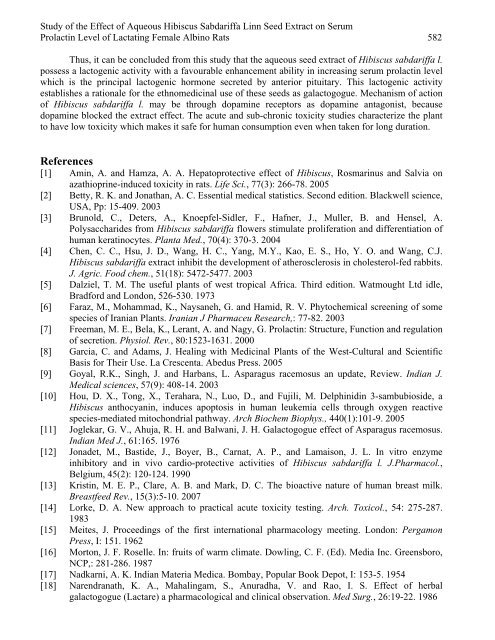
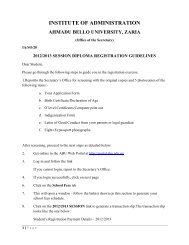
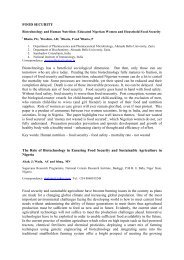
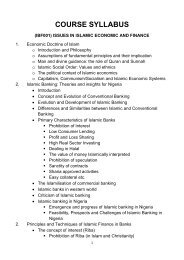
![Full Paper [PDF]](https://img.yumpu.com/49740055/1/184x260/full-paper-pdf.jpg?quality=85)
